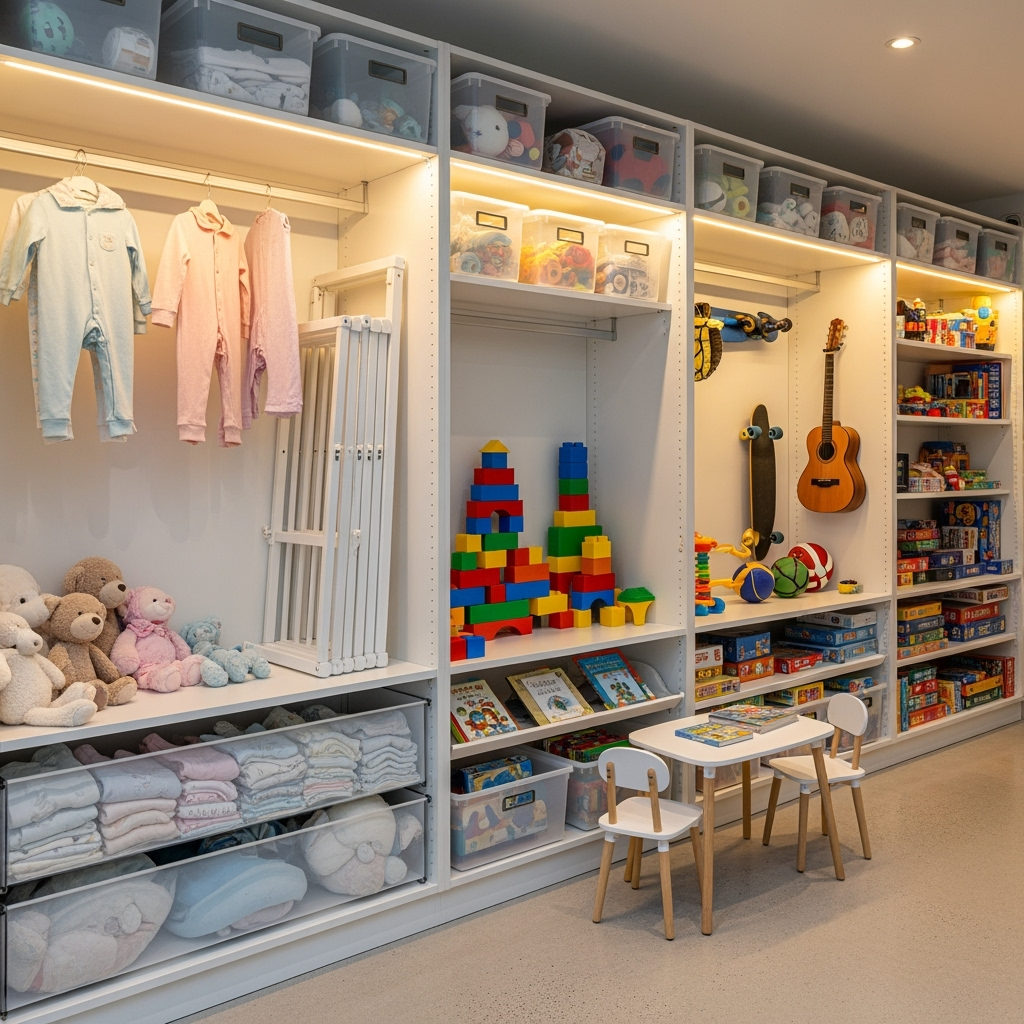Understanding Storage Needs Through Childhood Phases
As your family grows and children move through different stages of development, storage needs evolve dramatically. From baby gear to sports equipment, managing your space effectively becomes crucial for maintaining an organized home. This guide will help you create smart storage solutions that adapt to your family’s changing needs while maximizing available space.

Toddler Transition: Beyond the Baby Phase
As your little one grows from infant to toddler, their storage needs shift significantly. Here’s how to manage this transition effectively:
- Rotate clothing sizes seasonally, storing outgrown items for future siblings
- Preserve special baby items in climate-controlled storage for sentimental value
- Create designated spaces for growing toy collections
- Store baby gear and furniture properly for future use
Preschool and Early Elementary: Managing the Toy Explosion
The preschool years often bring an influx of toys, art supplies, and educational materials. Consider these storage strategies:
- Implement a toy rotation system using clearly labeled storage bins
- Create organized spaces for art supplies and school materials
- Store seasonal outdoor toys and equipment properly
- Maintain storage areas for growing book collections
School-Age Storage Solutions
As children enter school, their interests and activities expand, requiring new storage approaches:
- Organize sports equipment and seasonal gear
- Create storage systems for growing hobby collections
- Maintain space for academic materials and projects
- Store memorabilia and achievements thoughtfully
Smart Storage Strategies for Every Age
Implement these universal storage tips to maintain organization throughout childhood:
- Label Everything: Use clear, consistent labeling systems for easy identification
- Regular Rotation: Implement seasonal rotation schedules for clothes and toys
- Climate Control: Protect valuable items in climate-controlled units
- Accessibility Planning: Keep frequently used items easily accessible
- Future Planning: Consider storage needs for younger siblings
Making the Most of Your Storage Unit
Follow these tips to maximize your storage unit’s effectiveness:
- Choose appropriate unit sizes based on your family’s needs
- Organize items by age group and season
- Create clear walkways for easy access
- Use vertical space effectively with sturdy shelving
- Maintain inventory lists for easy item location
Protecting Valuable Items
Ensure proper preservation of important childhood items:
- Store special clothing in acid-free containers
- Use climate-controlled units for delicate items
- Implement proper protection for electronic toys and devices
- Maintain proper ventilation for stored items
Planning for Future Needs
Stay ahead of your family’s storage needs with these forward-thinking strategies:
- Anticipate storage needs for upcoming age transitions
- Plan space for growing hobby and sports equipment
- Consider future siblings when storing baby items
- Maintain flexibility in your storage organization
Conclusion
Smart storage solutions are essential for growing families navigating different childhood phases. By implementing these organized approaches and utilizing Public Storage’s versatile options, you can create an efficient system that evolves with your family’s needs. Remember to regularly assess and adjust your storage strategy as your children grow and their needs change.










Leave a Reply